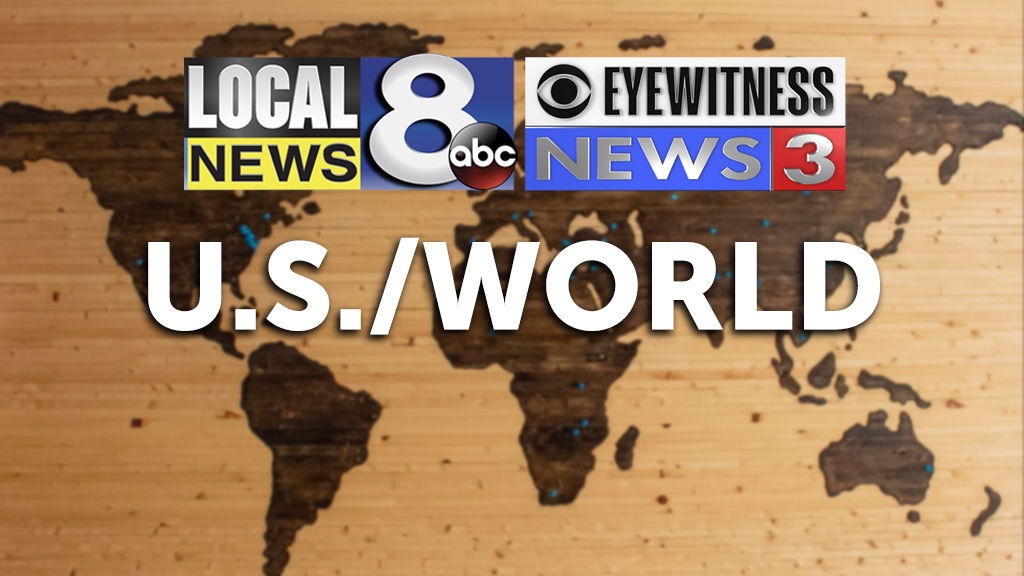Riskiest job in space and more top science stories this week

Try to imagine for a moment, if you will, what it must be like to walk in space.
After suiting up, you step outside the airlock. The International Space Station, nearly the length of an American football field, dwarfs you. Its exterior will be your workspace for the next six-and-a-half hours.
Planet Earth appears before you in its entirety, glowing against the dark vastness. Stars with names like 342843 Davidbowie and 3834 Zappafrank glint all around you; you’re in good company.
Surrounded by the universe and cradled by a lack of gravity, you can see everything. It’s no wonder that astronauts who have been to space have said being there is “a little bit of an addiction” and want to return as much as they can.
Defying gravity
Spacewalks are part of life on the space station. The lab orbiting Earth requires routine maintenance, upgrades and sometimes, emergency repairs — and it offers astronauts a chance to go outside.
With nine spacewalks to his name, NASA astronaut Mike Fincke aims to add one or two more on his next mission, launching later this year. A spacewalk is the most dangerous thing astronauts do, but it’s also incredibly rewarding.
“The only thing between you and the rest of the universe, seeing the whole cosmos of creation, is the glass faceplate of your visor on your helmet, and it’s just awe-inspiring,” Fincke said.
Humans aren’t the only ones experiencing what it’s like to live in space. Tardigrades and baby glow-in-the-dark squid are about to hitch a ride to the space station for scientific research.
You can watch the SpaceX cargo resupply mission launch on June 3 at 1:29 p.m. ET.
Wild kingdom
Tasmanian devils are making a comeback after dying out more than 3,000 years ago in Australia.
Seven joeys, or baby Tasmanian devils, were recently born in the wild at a sanctuary in New South Wales.
These fierce but cute carnivorous marsupials are about the size of shelled peanuts inside the pouches of their mothers right now.
Once they are grown, the little devils can actually help the environment, according to the researchers.
A long time ago…
In the 1960s, the skeletons of 61 humans dating back 13,400 years were recovered in what is now Sudan. The remains bore intense injuries sustained from spears and arrows.
Now, new research suggests this earliest known example of violent conflict was a result of dramatic changes in environment and climate.
This community of hunters, fishers and gatherers likely clashed with rival groups competing for food and other resources.
The changing climate toward the end of the last glacial maximum, when ice sheets covered much of the Northern Hemisphere, may have driven different groups to the Nile Valley. Trying to stay in the area likely brought on a lifetime of inescapable violence.
Look up
Venus is ready to put on a show after being obscured by the glare of the sun during much of winter and spring.
If you’re in the Northern Hemisphere, look west or northwest 30 minutes after sunset, and our closest planetary neighbor should be immediately visible. It’s the second-brightest object in our night sky, after the moon.
In lunar news, some lucky passengers on a Qantas-operated “flight to nowhere” enjoyed a front-row seat for the supermoon and total lunar eclipse earlier this week. Don’t fret if you missed this spectacular event. We’ve rounded up the best moon photos from around the world.
Mission critical
Seals are helping humans to understand how global warming affects one of the coldest places on Earth.
Antarctica is called “Earth’s thermostat” because scientists can use it to understand how the global climate is changing. But the inhospitably cold temperatures make it a tough place for humans to study in person. That’s why scientists are getting a little help from their friends: seals.
The furry, aquatic mammals thrive in the freezing climate and can dive up to 3,000 feet (914 meters) below the water’s surface. By fitting the seals with sensors, researchers can gather data from otherwise inaccessible ocean depths.
The information can’t come soon enough. This week, the World Meteorological Organization said there is now about a 40% chance that the annual average global temperature will temporarily breach a crucial tipping point in at least one of the next five years.
The wonder
Here are other marvels that caught our eye this week:
— A blind man had his vision partially restored after 40 years using a combination of therapy and technology — the first such successful case.
— Explore a visual history of stellar space-age fashion. It’s out of this world.
— Colorful clownfish, made famous in “Finding Nemo,” are among the most iconic sea creatures, but how do they develop that distinctive look? This is how they get their stripes.
Like what you’ve read? Oh, but there’s more. Sign up here to receive in your inbox the next edition of Wonder Theory, brought to you by CNN Space and Science writer Ashley Strickland, who finds wonder in planets beyond our solar system and discoveries from the ancient world.